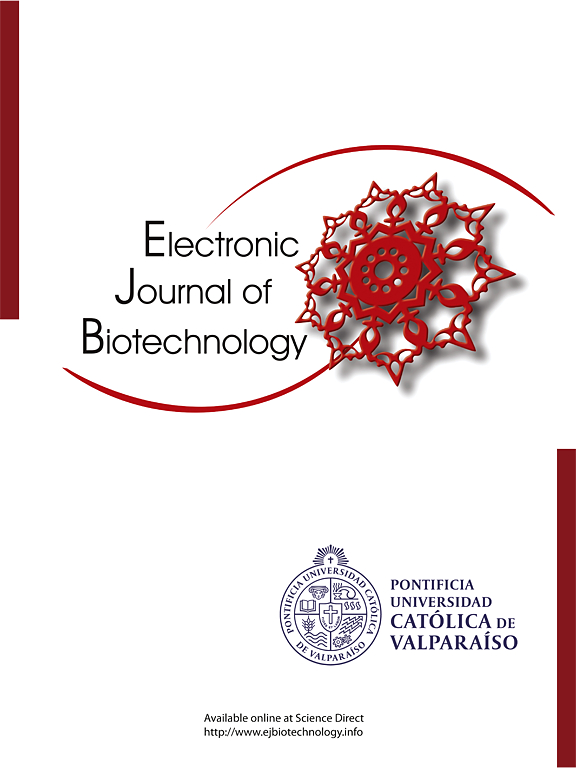Efficient in vitro regeneration and genetic fidelity analysis of shea tree (Vitellaria paradoxa Gaertn) using ISSR markers
IF 2.5
4区 生物学
Q3 BIOTECHNOLOGY & APPLIED MICROBIOLOGY
引用次数: 0
Abstract
Background
Shea tree is an economically valuable tree crop in the food, cosmetic, and pharmaceutical industries due to its seed oil, known as shea butter. Rapid propagation of superior shea trees through in vitro culture is essential to support domestication and conservation efforts. This study aimed to establish an efficient in vitro propagation protocol for the regeneration of shea true-to-type plantlets. Nodal explants were cultured on half-strength Murashige and Skoog (MS) medium supplemented with 6-benzylaminopurine (BAP) and/or kinetin (Kin) combined with 1-naphthaleneacetic acid (NAA) for shoot induction. Rooting was tested on half- and quarter-strength MS and full- and half-strength modified MS (MS1B) media, enriched with indole-3-butyric acid (IBA) alone or combined with NAA, IAA, meta-topolin (mT), and putrescine. Genetic fidelity of regenerated plants was assessed using inter-simple sequence repeat (ISSR) markers.
Results
The results showed that MS/2 medium containing 3:1.2:1 mg/L BAP:Kin:NAA gave the best regeneration of axillary shoots. Four-week-old axillary shoots were 100% rooted on MS1B/2 medium containing 3:0.1:40 mg/mL IBA:mT:putrescine. Rooted plantlets were successfully acclimated in vivo. The polymorphism of the ISSR markers ranged from 50 to 87.5%, with an average of 65%, and the polymorphism information content was 0.22. For genetic fidelity assessment, 34 scorable and reproducible markers were obtained. All markers were monomorphic and identical to the mother plant.
Conclusions
The micropropagation protocol proposed in this study is suitable for large-scale in vitro regeneration of shea without genetic alteration. However, further studies are needed for the induction of multiple micros-hoots.
How to cite: Attikora AJP, Silué S, Kone M, et al. Efficient in vitro regeneration and genetic fidelity analysis of shea tree (Vitellaria paradoxa Gaertn) using ISSR markers. Electron J Biotechnol 2025;75. https://doi.org/10.1016/j.ejbt.2025.01.007.

利用ISSR标记分析乳木果树(Vitellaria paradoxa Gaertn)的高效离体再生和遗传保真度
乳木果树是一种经济上有价值的树木作物,在食品,化妆品和制药行业,由于它的种子油,被称为乳木果油。通过离体培养快速繁殖优质乳木果树对支持驯化和保护工作至关重要。本研究旨在建立一种高效的乳木果真型苗的离体繁殖方案。在半强度Murashige和Skoog (MS)培养基上添加6-苄基氨基嘌呤(BAP)和/或动蛋白(Kin)联合1-萘乙酸(NAA)诱导芽。在半强和四分之一强MS和全强和半强改良MS (MS1B)培养基上进行生根试验,培养基中分别添加吲哚-3-丁酸(IBA)或与NAA、IAA、meta-topolin (mT)和腐胺。利用ISSR (inter-simple sequence repeat)标记评价再生植株的遗传保真度。结果:MS/2培养基中BAP:Kin:NAA的含量为3:1.2:1 mg/L,腋芽再生效果最好。四周龄腋芽100%生根于含有3:0.1:40 mg/mL IBA:mT:腐胺的MS1B/2培养基上。有根植株在体内驯化成功。ISSR标记多态性范围为50% ~ 87.5%,平均为65%,多态性信息含量为0.22。遗传保真度评估,获得34个可评分和可重复的标记。所有的标记都是单态的,与母株完全相同。结论本研究提出的微繁方法适合于牛油果在体外无基因改变的大规模再生。然而,多微鸣的诱导还需要进一步的研究。如何引用:Attikora AJP, silu S, Kone M等。利用ISSR标记分析乳木果树(Vitellaria paradoxa Gaertn)的高效离体再生和遗传保真度。中国生物医学工程学报(英文版);2009;16。https://doi.org/10.1016/j.ejbt.2025.01.007。
本文章由计算机程序翻译,如有差异,请以英文原文为准。
求助全文
约1分钟内获得全文
求助全文
来源期刊

Electronic Journal of Biotechnology
工程技术-生物工程与应用微生物
CiteScore
5.60
自引率
0.00%
发文量
50
审稿时长
2 months
期刊介绍:
Electronic Journal of Biotechnology is an international scientific electronic journal, which publishes papers from all areas related to Biotechnology. It covers from molecular biology and the chemistry of biological processes to aquatic and earth environmental aspects, computational applications, policy and ethical issues directly related to Biotechnology.
The journal provides an effective way to publish research and review articles and short communications, video material, animation sequences and 3D are also accepted to support and enhance articles. The articles will be examined by a scientific committee and anonymous evaluators and published every two months in HTML and PDF formats (January 15th , March 15th, May 15th, July 15th, September 15th, November 15th).
The following areas are covered in the Journal:
• Animal Biotechnology
• Biofilms
• Bioinformatics
• Biomedicine
• Biopolicies of International Cooperation
• Biosafety
• Biotechnology Industry
• Biotechnology of Human Disorders
• Chemical Engineering
• Environmental Biotechnology
• Food Biotechnology
• Marine Biotechnology
• Microbial Biotechnology
• Molecular Biology and Genetics
•Nanobiotechnology
• Omics
• Plant Biotechnology
• Process Biotechnology
• Process Chemistry and Technology
• Tissue Engineering
 求助内容:
求助内容: 应助结果提醒方式:
应助结果提醒方式:


